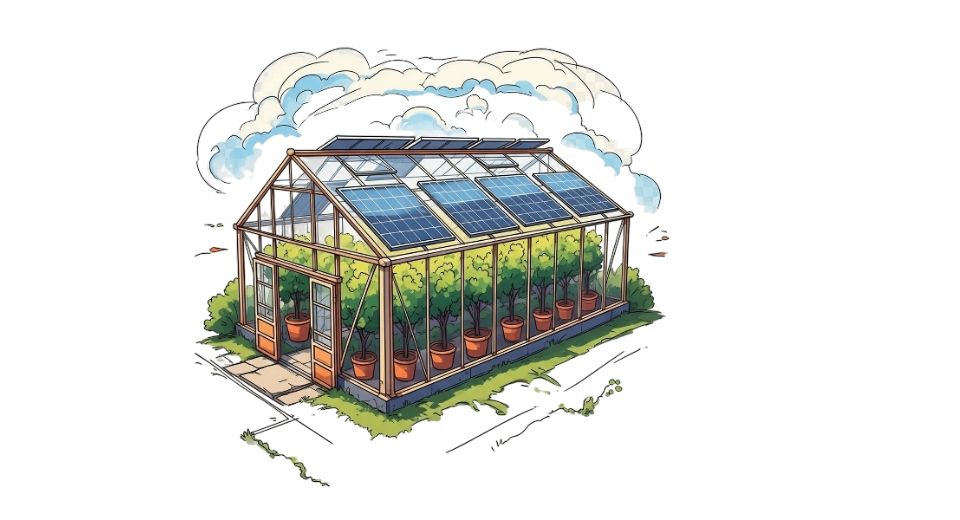
Jun 23, 2025

The farm landscape is seeing a dramatic change, and novel solutions are rising to meet the twin problems of food security and ecosystem sustainability. An updated review of the Global Photovoltaic Greenhouse Market, presented by Metastat Insight, highlights a major shift in the way human beings cultivate food and produce energy. This up-and-coming industry seamlessly combines cutting-edge solar technology and controlled environment agriculture, providing a strong route towards a more robust and resource-effective future.
Global Photovoltaic Greenhouse market is estimated to reach $647.5 million in 2025 with a CAGR of 16.3% from 2025 to 2032.
Essentially, a photovoltaic greenhouse is a building in which solar panels are included within the structure, causing crops and clean electricity to be generated simultaneously. This masterstroke has many advantages that go far beyond energy cost savings. By generating solar energy on the site, these greenhouses significantly reduce dependence on external power grids, promoting increased energy for farming activities, especially in far away or off-grid areas. This freedom is transformed into reliable operational costs, protecting farmers from instability of traditional energy markets. In addition to direct economic benefits, the environmental impact is very large. The amount of carbon left behind cultivation from the crops grown inside these sun-operated greenhouses significantly reduces the initiative worldwide with the aim of preventing climate change used by traditional farming methods and reducing greenhouse gases.
The design flexibility in this market stands out, as it can meet various farming demands. From the minimalist tunnel greenhouses that are ideal for small operations to the taller gable structures that provide improved air circulation for certain types of crops, and the even-span models that balance out internal space, every design has a purpose. Lean-tos, which are attached to existing structures, offer efficient solutions for the urban or space-limited environment, whereas Gothic styles with arched roofs enhance snow runoff and structural lifespan. This range of possibilities allows growers to choose systems specifically designed for their crops, local climatic conditions, and scales of operation, optimizing both farm output and energy harvesting.
In addition, these high-tech greenhouses provide unmatched climate control flexibility. They provide plants with optimal growing conditions, protect them from adverse weather conditions such as frost, high winds and excessive rain. This preservation not only protects crops, but also allows long growing weather, which allows year -long production of fresh fruits and vegetables. Controlled environments with support from the energy produced, the results in better quality crops, are in high amounts and to produce low incidence of pests and diseases. Additionally, the moderate shading offered by built-in solar panels can minimize water evaporation from the land, resulting in more efficient use of water – an essential benefit in areas experiencing water shortage. This new concept enhances farming productivity while saving valuable resources.
The growth of this market is also fueled by rising global consciousness of sustainable food production and the rising need for clean energy. Governments and global institutions are aggressively promoting such technologies with unequal encouragement, subsidy and funding plans, promoting an improvement environment for investment and expansion. Solar panel efficiency, physics and technology are in technological progress in technologies, which are rapidly cheaper and economically possible for photovoltaic greenhouses for increasing diversity of agricultural enterprises. The synergy between agricultural requirements and renewable energy goals holds these systems as a transformative solution for the future.
The movement towards this integrated farming and energy models shows a comprehensive social change towards environmental responsibility and resource adaptation. It represents an further thinking approach for land use, where the same parcel of land can contribute to both food production and clean energy production, effectively addressing land shortage. The current research and development in the sector are aimed at further fine-tuning light transmission to crops with the aim of delivering maximum energy output, such that agricultural output is never compromised. This dedication to innovations guarantees the continued growth and efficiency of such dual-functioning systems.
Finally, the new trends in the global photovoltaic greenhouse market, stunning by Metastat Insight, reflect a compelling passage for sustainable cultivation. This convergence of solar energy with agricultural land is not just a technological innovation, but is an integrated effort to ensure food shares, preserve natural resources and make the world a more durable location. It represents a promising new chapter in a constant search for a more mutual and durable world where agricultural prosperity and protection run by hand.
Drop us an email at:
Call us on:
+1 214 613 5758
+91 73850 57479